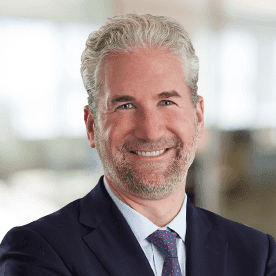More clarity on interest rates means more clarity on the investment outlook and the opportunities across private markets.
When it comes to the cost of capital, “higher-for-longer” has been the dominant theme in markets for at least a year now. And it’s likely to remain so—even if central banks deliver a handful of expected interest-rate cuts in the months ahead.
Stubbornly high borrowing costs and sticky inflation will put pressure on cash-flow stability and on some asset valuations. They are also starting to bring the medium-term rate and return outlook into sharper focus. That should increase transaction volume across private markets. Meanwhile, the global economy, driven in part by solid US growth, has held up extremely well.
What’s more, persistent stress among small and mid-sized banks who must comply with changing regulations and funding needs should broaden the investment opportunity set for private lenders and enhance return potential. We consider this good news for experienced lenders with the ability to source, underwrite and manage credit risk throughout the economic cycle.
In other words, there’s a bright side to a higher-for-longer rate environment. And as bank lending declines and public markets shrink, the private market universe continues to expand. We expect to see attractive opportunities across the risk-return spectrum.
A Rapidly Growing Opportunity Set
The sustained growth of private credit has been remarkable. Before 2008, it effectively didn’t exist as a distinct asset class. By 2023, total assets weighed in at about $1.6 trillion—roughly the size of the US high-yield bond market. Those assets are expected to hit $2.3 trillion by 2027, according to Preqin, a data provider.
That’s a pretty big pool for investors to fish in—and it only applies to corporate credit. Adding other forms of private credit, including commercial real estate, infrastructure, and consumer-oriented specialty finance—makes the opportunity set even larger.
Even so, it’s important that investors to pick their spots carefully. High rates will be a burden for some borrowers and may pose additional risks for lenders.
The Apex of Active Investing
Navigating a market beset by these cross currents requires an active approach—and we believe private markets offer a particularly effective form of active investing. Lenders can structure loans to suit current market conditions and specific borrower characteristics. Today, this includes lending against reset asset values at conservative loan-to-value ratios and the ability to negotiate protective covenants.
What’s more, private credit transactions are directly originated, negotiated and structured. And they involve regular communication among lenders, borrowers and, in the case of direct lending, private equity sponsors. This makes it easier to engage with borrowers and proactively address potential problems.
Leaning In
Consider commercial real estate debt. The commercial real estate sector faces its share of challenges and bad press. But with market stress and regulatory changes pushing banks to reduce commercial property loans, the the balance of power has shifted to private lenders who can pick strong borrowers with attractive collateral and negotiate deals with high return potential and strong downside mitigation. And with ample equity cushions to absorb losses, there’s no need for credit investors to lose sleep trying to time the market.
Higher rates will create hurdles in the months ahead, and loan modification activity will likely get more challenging. But with investors sitting on ample amounts of dry powder and capitalization rates increasing, we expect transactions to pick up as bid-ask spreads narrow. A wave of maturing loans this year is also likely to generate demand for capital at a time when terms are likely to favor lenders (Display).

